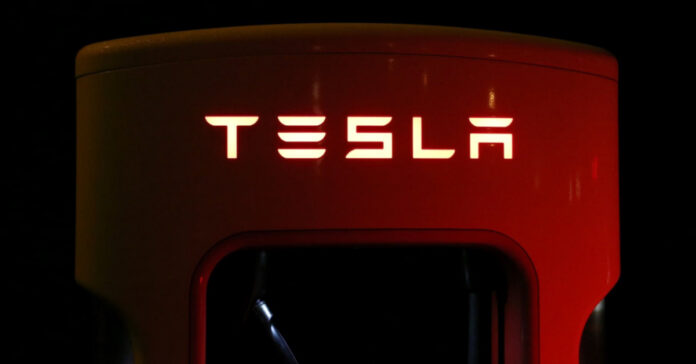None of us will ever be able to drill for oil, pump it from the ground, and refine it into liquid fuel to power our own trucks, cars, tractors, heavy equipment, and small engines, but thanks to solar power, we can generate our own electricity. That gives individual preppers a way to cut the cord and exist more independently before, during, and after a disaster.
Most importantly, if we can generate our own power, then we can continue to enjoy many of the benefits of our modern life during a grid-down situation, from lighting to cooking to washing dishes and clothes. But what about transportation? Can we—or should we—replace our gas vehicles with an electric vehicle, or EV?
As I explore installing solar power for my house, I can see a future in which I can power all our daily electric needs, plus charge battery packs for tools like chain saws, leaf blowers, drills and drivers, circular saws, etc. To take this a step further, we could also charge e-bikes, golf carts, and even an electric four-wheeler or side-by-side, of which there are a few on the market. But I don’t see how a home solar installation could charge an electric vehicle and power the house because an EV requires so much power.
When you study the power consumption of an EV, you can see why EV chargers are expensive and why our grid can’t support very many of them without significant enhancements.
For preppers, the promise of electric vehicles remains unfulfilled and will likely remain so for the foreseeable future.
It’s all about the Kilowatt Hours
A kilowatt hour (kWh) is a measure of electric consumption over time and is an important measurement when we discuss how much electricity a solar system generates and stores.
For example, if I run a 30-watt electric lamp for an hour, I will have consumed 30 watthours, or 0.03 kWh. Let’s imagine I have a deep well and an electric pump. When the well pump kicks on, if it draws 1800 watts for one minute, it will also have consumed 30 watthours, or 0.03 kWh. To power the above items, a solar system will not only need to store power, it will need to provide at least 1800 watts (or 1.8 kWh) at a time, plus offer a significant surge capacity because pumps draw a burst of power when they start up.
Our house, like most, has a mix of loads. Items with motors and systems that generate heat require the most power. Systems like lights and the TV draw less power, but can run for hours, so their consumption adds up. Items like a toaster have a high draw, but run for just minutes, while an electric cook top might run for ten to 30 minutes or more. Then there are devices like the refrigerator, freezer, and hot water heater that are not on constantly but cycle on and off all day, every day. We add all this up, and we can see how many kWh we consume a day and base our solar system size on this number.
House Power Consumption
Last month, our house consumed an average of 26.7 kWh per day. Some months, that number reaches 30. If you have a gas stove, oven, hot water heater and other appliances, your consumption may be far less. We are a full electric house, which is why we heat with wood.
At no time did our house draw more than 3 kWh in an hour, and there were some hours late at night or when no one was home, when our power consumption was only a few hundred watts.
When designing a solar system for the house, you might assume that I need a system that generates and stores 30 kWh per day. That would be true if we could guarantee that the sun would shine at least four hours in the middle of every day. That might be the case in some parts of the country, but not here. Because there may be several cloudy, stormy, or snowy days in a row, we need a system that can store at least two and preferably three or four times as much electricity as we consume. That means we need up to 120 kWh of battery storage and enough solar panels to power the house while it recharges the batteries.
Power your House or your Vehicle?
Have you seen the advertisement on TV where the electric Ford F-150 Lighting powers a house during a power outage? It can do that because it takes more power to run the truck than the house.
Given the solar system we are considering, I would have the choice of powering my house for five days or charging my Ford F-150 Lightning or a Rivian electric truck once. Even a smaller Tesla Model S, which won’t be hauling any firewood, requires as much electricity as my house does in three or four days.
In a survival situation, I would face a choice: power my house or recharge my vehicle. If that vehicle is a car or truck, it will take days to charge, longer if we are also powering the house at the same time. To charge an EV once a week, I need to double the size and cost of my solar system. If I want to recharge daily, I need to quadruple it.
However, if I have an eBike, my proposed system could produce enough power to charge its battery in just six minutes. Depending on the golf cart—which can get up to 60 miles per kWh—it could generate enough power to charge the cart in 15 to 30 minutes.
So why are electric cars and trucks so power hungry? Because they are heavy, loaded with safety features, and have bells and whistles golf carts and four-wheelers don’t. Consumers want vehicles with heat and air conditioning, windshield wipers, stereo systems, etc., all of which require power. Your gas-powered vehicle powers these items almost as an afterthought, using its alternator to create power when the engine is running and the coolant in the radiator to provide heat. In an EV, these common accessories drain power from the batteries, decreasing the range, especially in cold weather when you turn on the heater.
Alternate Transportation
An electric golf cart or side-by-side is closer to a Ford Model T in terms of creature comforts than it is to a Ford F-150 Lightning. But in a post-SHTF situation, who’s going to complain? A side-by-side or a Model T both beat walking.
If you can live in a post-SHTF world driving around in your golf cart or eBike, then you can use a solar system to power your mode of transportation. If you want a full-size electric pickup or an electric tractor, then you better have a large field where you can place your 80 or 100 solar panels and a deep pockets to fund the batteries your system will require. Otherwise, an EV just isn’t a good option for preppers who produce their own power and cannot rely on grid power or public recharging stations.
I have written before about a grid-down scenario throwing us back to the 1880s. If that is the case, then a solar-powered eBike can fulfill the role of a horse in terms of personal transportation. A golf cart, 4-wheeler, or SXS with a trailer can fulfill the role of a cart or wagon drawn by a team. We just have to hope whatever knocks out the grid doesn’t knock out important components of our solar power systems and battery powered devices.
The only other alternative would be to use your EV rarely, such as only in an emergency. If you only need to recharge is 10 kWh, that’s doable. Charging it 100 kWh will suck up all the power a residential solar system can produce for multiple days..
Post-Disaster Power
Whatever you plan to rely on for power in a post-SHTF scenario, you have to worry about running out of consumables, like fuel, oil, and grease; you have to worry about component wear and tear, outright failures, and availability of replacement parts. If you have a generator, one day the gas or propane and oil will run out. If you have a solar power system, one day a charge controller, battery charger, invertor or other critical component will fail. Your warranty won’t be much after TEOTWAWKI when the manufacturer or distributor won’t be able to diagnose the system over the Internet or send a replacement part out by Fedex.
At some point, we might be better off with an old mill wheel or a steam engine that we can build and maintain with 1880s-era tools and technology to powers an alternator. And that’s about as far as you can get on the technological spectrum from an EV. Where we stand now, an EV is just not a good choice for preppers.







